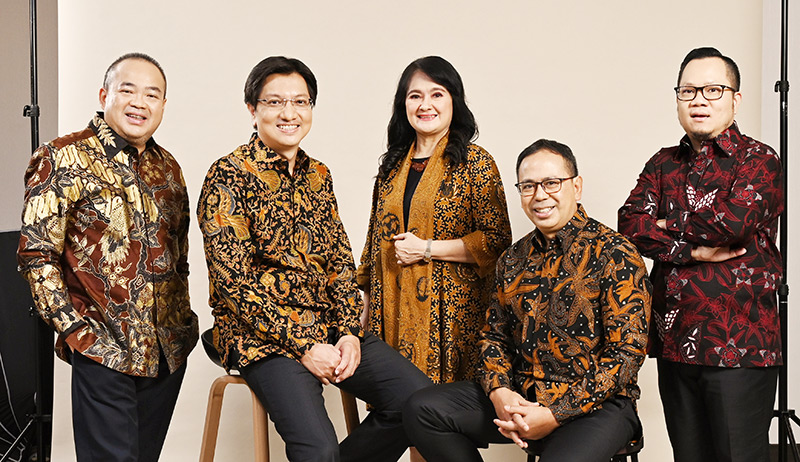Copyright © 2021 IFSWF Ltd.
The opinions contained here are those of the authors and do not reflect the views of IFSWF or any of its members.
In last year’s International Forum of Sovereign Wealth Funds (IFSWF) Annual Report,1 PwC examined the accelerating trend for governments to set up sovereign investment funds to promote domestic economic development.
These sovereign funds often have the mandate to finance infrastructure projects, targeted support for specific sectors and co-investment initiatives to attract foreign direct investment (FDI). The rise of sovereign investment funds is continuing apace: today there are 45 funds worldwide that have at least part of their mandate to deliver development or strategic outcomes, collectively managing around $2.3 trillion in assets – with nine governments having set up strategic investment funds in the past five years alone.2
Many countries establishing strategic investment funds have been encouraged by multilateral development and banking institutions such as the World Bank Group and International Monetary Fund (IMF), as well as regionally-orientated institutions like the Asian Development Bank, European Investment Bank, African Development Bank and the Inter-American Development Bank. Governments worldwide now see the strategic investment funds model as presenting an opportunity to accelerate their economic development programmes by attracting and channelling in external funds – both public and, increasingly, private – while also contributing to the achievement of wider societal and often environmental benefits. If anything, the value and need for strategic investment funds has been increased by the global downturn triggered by the COVID-19 pandemic.
But while the opportunity is clear, launching a strategic investment fund is challenging. These types of institutions must have sufficiently robust standards of governance and transparency to give external investors the confidence to inject funds. Consequently, strategic investment funds have to demonstrate that they have the governance structure, reporting lines and skills needed to operate with a commercial mindset, and to enable investors to feel confident that their money is going where they expect and being used for the agreed purpose. This all adds up to a need to exhibit the same pace and investment rigour as the private sector.
Indonesia launches its strategic investment fund
But what does the global landscape of strategic investment funds look like from the perspective of a country setting about launching its own? Over the past year, PwC Indonesia supported by the global PwC network has worked closely with the Government of Indonesia to help it set up the Indonesia Investment Authority (INA). In our view, this project is a case study – and, indeed, a potential template – for other countries currently considering whether a strategic investment fund might be a viable option for bolstering their own economic development strategies.
 The INA senior management team.
The INA senior management team.
Indonesia – the largest economy in south-east Asia – is currently middle-ranking among developing economies in terms of wealth per head, with a per capita gross domestic product (GDP) of $4,135.3 Its economy has been hit hard by the global COVID-19 pandemic, with its GDP shrinking by 2.2% in the last quarter of 2020 compared to a year earlier.4 As well as dealing with the immediate fallout from COVID-19, Indonesia also has a longer-term goal to diversify its economy further from its traditional reliance on natural resources and towards other high-potential industries for the future, including digital technologies and life sciences.
However, perhaps the most pressing economic need facing Indonesia is a requirement for extensive investment in developing infrastructure such as seaports, airports and toll roads. This need is amplified by Indonesia’s physical geography, since the country is spread across 17,500 islands and 70% of its area is water. As China’s experience has shown, the economic multiplier effect of enhanced transport and communications infrastructure is massive. And it is currently cheaper5 for a manufacturer in Jakarta to ship its goods to Shanghai than to Kalimantan, the Indonesian portion of Borneo. To help address such issues, the INA estimates6 that there’s a need for capital investment totalling $450 billion in modernising Indonesia’s infrastructure – but only $215 billion of that financing has been earmarked in the national budget. Closing the $235 billion shortfall requires innovative thinking and new approaches.
Set for take-off
The Indonesian Government established INA, with active and visible sponsorship from President Joko Widodo, specifically to meet this need. INA is designed to be a world-class, value-creating investment organisation consisting of independent management and external professionals applying international best practices. Indonesia sought to stand up the new fund as quickly as possible, while simultaneously building INA’s credibility to attract third-party co-investors. The intent is to expand the fund flexibly to accommodate the sophisticated investment structures that global investors will want to use to co-invest. The fund’s structure and approach mean it will allow Indonesia to reap the exponential growth benefits of improved infrastructure without ceding sovereignty.
All of these goals have been achieved within a matter of a few months. A private-markets investment fund of this scale has never previously been implemented in Indonesia – and the Government needed to design, implement and programme-manage the build of the organisation from scratch. PwC Indonesia supported by the global PwC network played a key role in helping to design the functions and key processes to underpin INA’s operating model. Additional complexity stemmed from the sophisticated underlying fund structures that INA would use and from the need to align with the stringent expectations of both the Indonesian Government and the global investment community.
 The Jakarta-Cikampek elevated toll road under construction.
The Jakarta-Cikampek elevated toll road under construction.
As at the time of writing in the first quarter of 2021, INA appears to be set for a successful launch. Created with an initial target of managing $20 billion7 in assets – a figure that President Widodo has said could ultimately reach $100 billion8 – the fund is attracting global interest. Its powerful pull reflects the Government’s strategy for launching and structuring the fund, enabled by a package of tax and labour market reforms introduced in October 20209. Unlike traditional sovereign wealth funds that manage a country’s surplus reserves, Indonesia has capitalised INA with $6 billion of state funds, while inviting foreign partners to come in as co-investors in a range of asset types.
In late March 2021, it was reported that INA had already received commitments of up to $20 billion from global foreign investors – with press reports mentioning pledges including $10 billion from the United Arab Emirates,10 $2 billion from the US International Development Finance Corporation, $4 billion from the Japan Bank for International Cooperation and S$2 billion from Canada pension fund CDPQ, to name just a few.11 Given Indonesia’s urgent need to upgrade its infrastructure, it is hardly surprising that initial targets for INA investments12 will include brownfield infrastructure projects – primarily toll roads, seaports and airports13 – alongside sectors such as healthcare, renewable energy, digital technology and waste management.
Professional leadership and robust governance
The key challenge for any strategic investment fund – especially a new one entering the marketplace – is securing the confidence of international investors by putting in place strong and credible governance and transparency. For INA this was especially important, since its launch represented the first major test of international investors’ appetite for sovereign wealth funds in Asia since the multibillion-dollar 1Malaysia Development Berhad scandal in Malaysia.14
Indonesia has tackled the governance issue head-on. The Government has consistently highlighted the importance of good governance to the fund’s success15 and has backed this up by appointing a banker with extensive international private sector experience16 – Ridha Wirakusumah, head of Indonesia’s Bank Permata – to lead an INA board packed with seasoned financial sector professionals. In mid-February 2021, in his initial comments as head of INA,17 Wirakusumah stressed that the fund would ensure good governance by working with the supervisory board and accounting firms, while also looking to boost professionalism in Indonesia.
 Water and gas pipeline at Mount Sinabung, North Sumatra, Indonesia.
Water and gas pipeline at Mount Sinabung, North Sumatra, Indonesia.
It is no coincidence that these messages are being echoed by other strategic investment funds being launched elsewhere in the world. Establishing these funds is becoming increasingly important to more countries, and there is continued interest in them among emerging and frontier markets. Notable recent developments include Egypt’s success in establishing The Sovereign Fund of Egypt,18 established in 2018 to attract private investment and promote and co-invest in state-owned assets. And in late 2020, Morocco confirmed plans to establish the Mohammed VI Fund for Investment,19 aiming to “finance major investment projects and support them, at the national and local levels, within the framework of partnerships with the private sector, and to provide capital to small and medium enterprises through sector-oriented or thematic funds.”
Both of these funds have a similar purpose, goal and approach to INA – and are looking to harness the same success drivers, including a strong legal framework, governance and risk management; a clear strategy and mandate; commercial fund operations underpinned by global best practices and independent professional management; and enabled with the latest technologies. In 2021 and beyond there will likely be more countries that adopt the strategic investment fund approach – with potential new joiners to the global strategic investment funds community set to include Thailand, Philippines, Kenya, Mongolia and others across the emerging and frontier markets. As new funds are launched, they will also serve as a catalyst for broader fiscal and economic reforms and a vehicle for economic development.
What’s more, the attractions of launching a new fund based on the strategic investment funds or sovereign wealth funds model are not limited to emerging economies. Developed countries with a large capital surplus sitting in their reserves may also want to consider taking this step to make better use of that capital. A case in point is Ireland, whose €8.6 billion Ireland Strategic Investment Fund (ISIF)20 was set up in 2014. Following the COVID-19 pandemic, Ireland’s Minister of Finance has asked ISIF to focus on investments in medium and large-scale enterprises in Ireland through a Pandemic Stabilisation and Recovery Fund (PSRF) to support the economic recovery. So, whether a nation is emerging or developed, an independent sovereign wealth fund structure provides a vehicle with robust accountability, governance, controls, oversight, mandate, operating model and transparency to help achieve economic policy goals while generating returns.
Conclusion: Indonesia scores a “win-win”
Coming back to INA, global investors’ positive response to the launch speaks for itself: with INA, Indonesia is doing things right – and the country’s citizens will be the ultimate beneficiaries. A research note from Nomura in January 2021 mirrored the widely-held view in the markets, commenting: “We believe this is a win-win solution for Indonesia and investors as [the] SWF will create more sustainable long-term infra[structure] funding, whilst investors can enjoy government-backed high-yield investments. We believe foreign participation will help ensure professionalism for the fund and boost returns, and indirectly will be able to entice other countries to participate in Indonesia's high-yielding investments.” The message is clear: with INA, the strategic investment funds model is set to work its magic yet again.
 Semanggi Interchange, Jakarta.
Semanggi Interchange, Jakarta.
The view from INA’s CEO: Addressing two interrelated challenges – funding and projects
Ridha Wirakusumah, CEO of INA, says: “Being appointed to lead INA is tremendously exciting. But it brings challenges – two in particular. The first is how to find the money from overseas. Success breeds success, so if we can actually show the world that we mean business and have very strong governance, the money may find its way here. The fact that we are going to be co-investing with the international investors gives them a lot of comfort, because they know that if we screw up, we will feel the pain as well. The level of foreign direct investment (FDI) into Indonesia has actually gone down recently. We are hoping INA will spur Indonesia’s attractiveness back up.
“So attracting the money is one challenge. The other factor that will make or break the success of INA is the projects: whether the projects are feasible or not – and also whether we can find terms and deal structures that will be satisfying both to investors and ourselves alike. That's another key area in ensuring there is a match from the investor side and from the projects themselves, and that's not necessarily easy either. I sometimes argue that finding the money is easier than finding the projects at times. And there’s always a desire on the part of the Government to expedite the sale of some state-owned assets and enterprises (SOEs) to release some of the debt. But we also need to think about how we can make the SOEs even more efficient, not just in terms of money, but also on the operational execution side.”
Footnotes
- https://ifswfreview.org/
- Source: IFSWF Data as of 01/03/2021
- Source: The World Bank - https://data.worldbank.org/indicator/NY.GDP.PCAP.CD?locations=ID
- Source: https://www.ft.com/content/3a8a4a52-c934-4c57-adb3-c003339b7a1e
- Fact provided by INA CEO Ridha Wirakusumah in an interview
- Figures provided by INA CEO Ridha Wirakusumah in an interview
- Source: https://www.reuters.com/article/us-indonesia-swf-idUSKBN29V0UT
- Source: https://www.ft.com/content/3a8a4a52-c934-4c57-adb3-c003339b7a1e
- Source: https://www.ft.com/content/865cdd80-f31f-4ba1-9693-1fae6277628a
- Source: https://www.reuters.com/article/emirates-indonesia-investment-idUSL1N2LL0HK
- Source: https://asia.nikkei.com/Economy/Indonesia-moves-closer-to-establishing-5bn-sovereign-wealth-fund
- Source: https://asia.nikkei.com/Economy/Indonesia-moves-closer-to-establishing-5bn-sovereign-wealth-fund
- Source: https://jakartaglobe.id/business/indonesias-sovereign-wealth-fund-unveils-initial-strategy-to-attract-investors
- Sources: https://www.bbc.co.uk/news/world-asia-53563065; https://www.ft.com/content/3a8a4a52-c934-4c57-adb3-c003339b7a1e
- Source: https://jakartaglobe.id/business/indonesias-sovereign-wealth-fund-unveils-initial-strategy-to-attract-investors
- Source: https://www.ft.com/content/3a8a4a52-c934-4c57-adb3-c003339b7a1e
- Source: https://jakartaglobe.id/business/indonesias-sovereign-wealth-fund-unveils-initial-strategy-to-attract-investors
- Source: https://tsfe.com/
- Source: https://www.finances.gov.ma/en/Pages/detail-actualite.aspx?fiche=5222
- Source: https://isif.ie/


